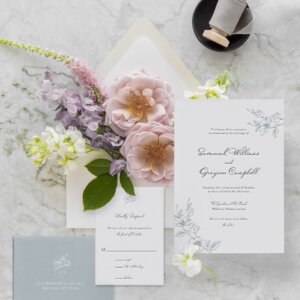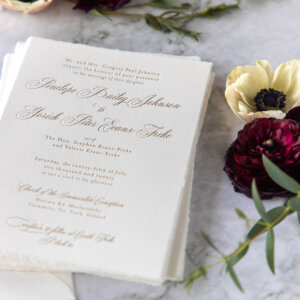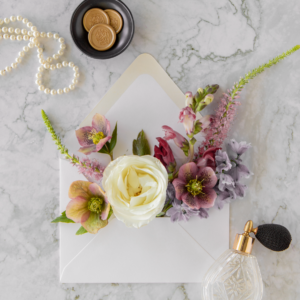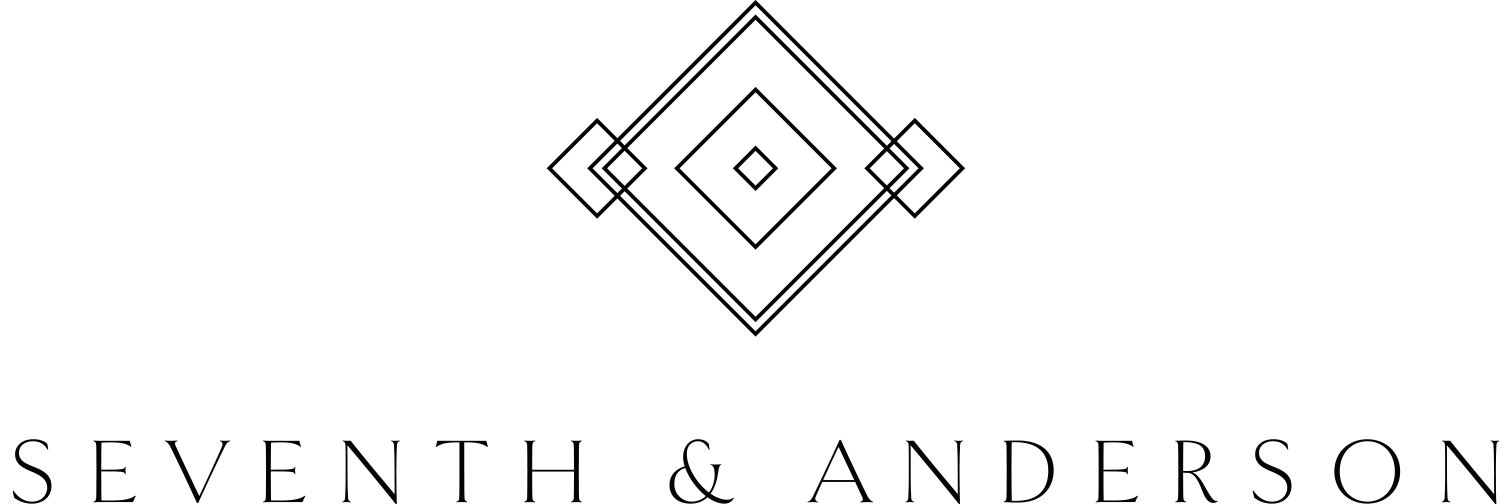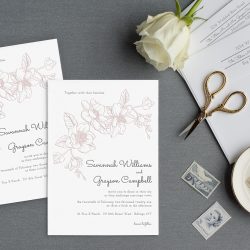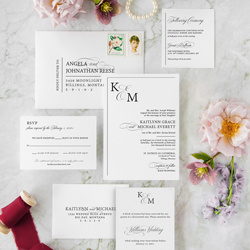filed in
What To Include In Your Wedding Invitation Suite
Wedding invitations are your guests’ first glimpse into all of the events leading up to, and including, your big day. A complete invitation suite includes more than just the date and location of your ceremony. It invites, guides, and informs your guests of pertinent information. Guests may need to know how to find the reception, where to stay and what the dress code is. Today I’m going to walk you through the various pieces and components that make up a wedding invitation suite.
The wedding invitation and response card are the obvious pieces, but what about everything else?
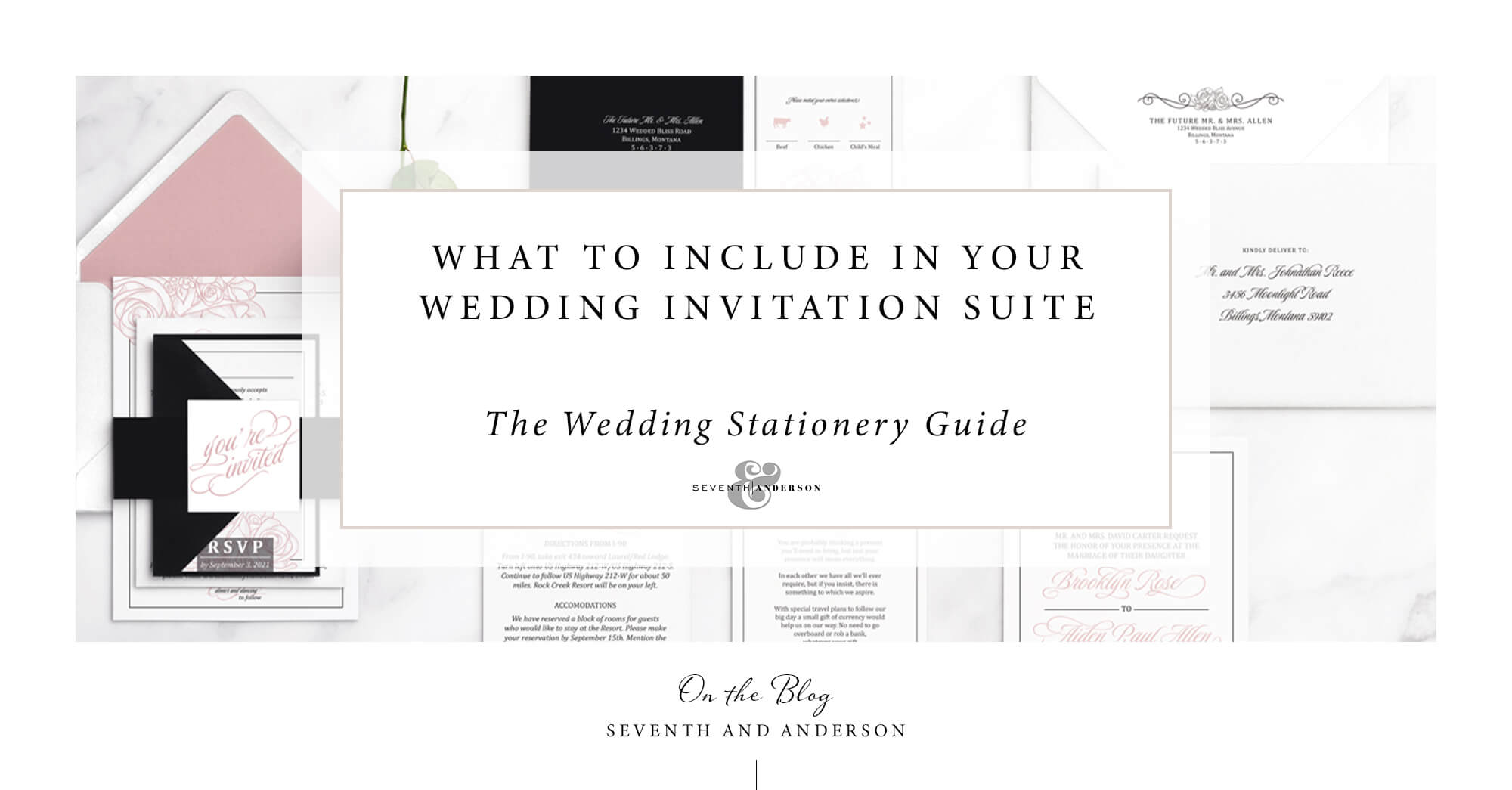
THE INVITATION SUITE
The following pieces are the most common items you’ll find in a wedding invitation suite. You may need all these pieces (and more), or just a few of them – it depends on your wedding! If you’re having a casual wedding in your home town, chances are you can skip the directions cards. But if you’re planning an elaborate destination wedding you may want to provide your guests with a lot of information (or maybe just direct them to your wedding website).
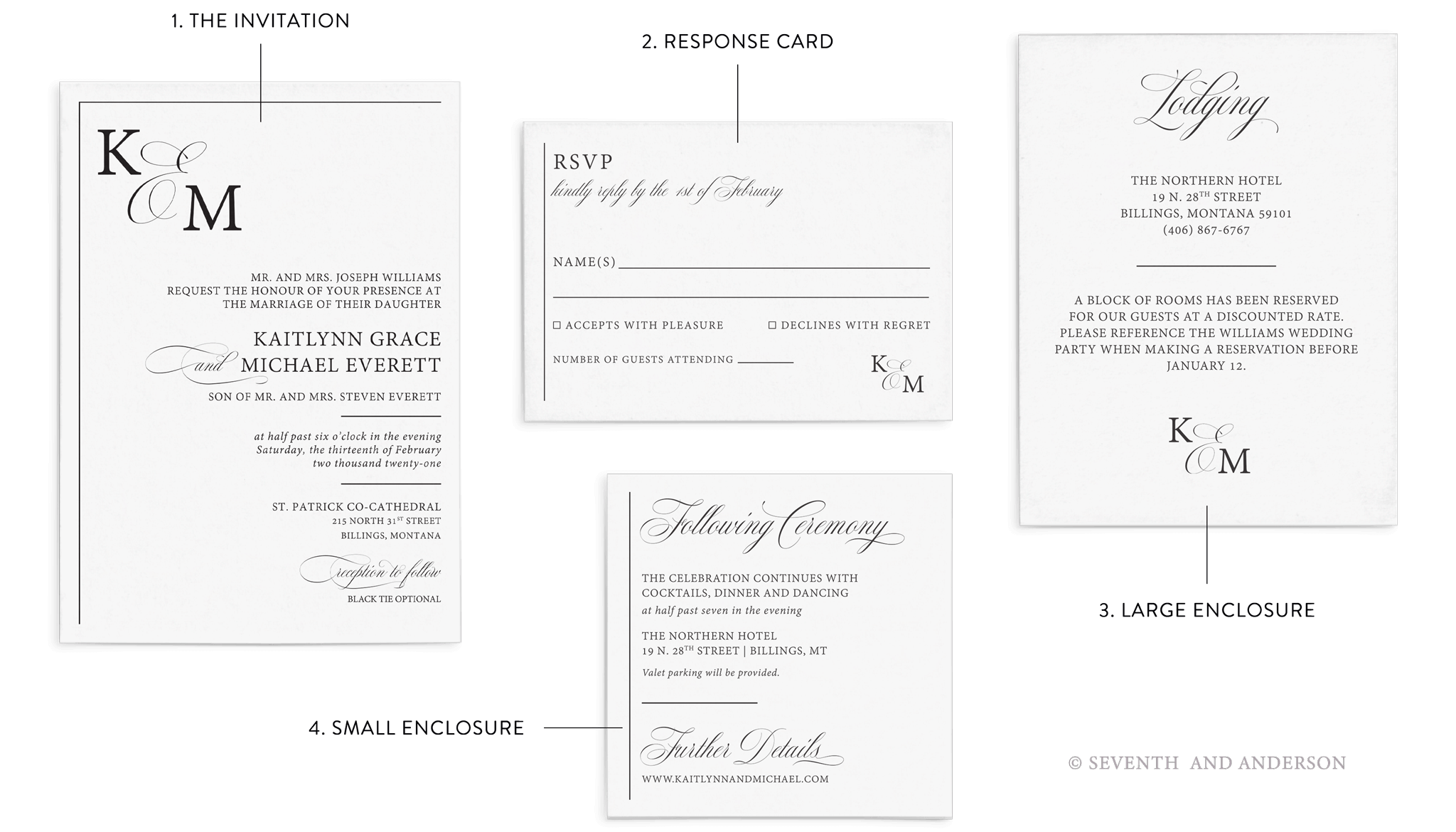
THE INVITATION
The invitation is the main component of your stationery suite. It lists all of the important details – the couple’s names, wedding date, time, and ceremony location.
Standard Size – 5 x 7″
RESPONSE CARD
Your guests will mail back this card indicating who is attending as well as their meal choices, if applicable.
Standard Size – 3.5 x 5″
LARGE ENCLOSURE
This card can be used for any information you’d like to share with your guests, but it is commonly used to list preferred accommodations for out of town guests, directions or parking information.
Other uses include transportation and shuttle, pre- or post-wedding activities, brunch details or rehearsal dinner details.
Size Shown – 4.25″ x 5.5″
Can be vertical or horizontal
SMALL ENCLOSURE
The small enclosure is most commonly used as a reception card. If your ceremony is at a different venue than your reception, you will want to use the small enclosure to note the reception address and start time.
Other uses include wedding websites, registry details, wishing well requests, or any other brief information you’d like to share.
FINISHING TOUCHES
If your wedding invitation suite contains multiple pieces, consider using one of the following finishing touches to keep everything in place.
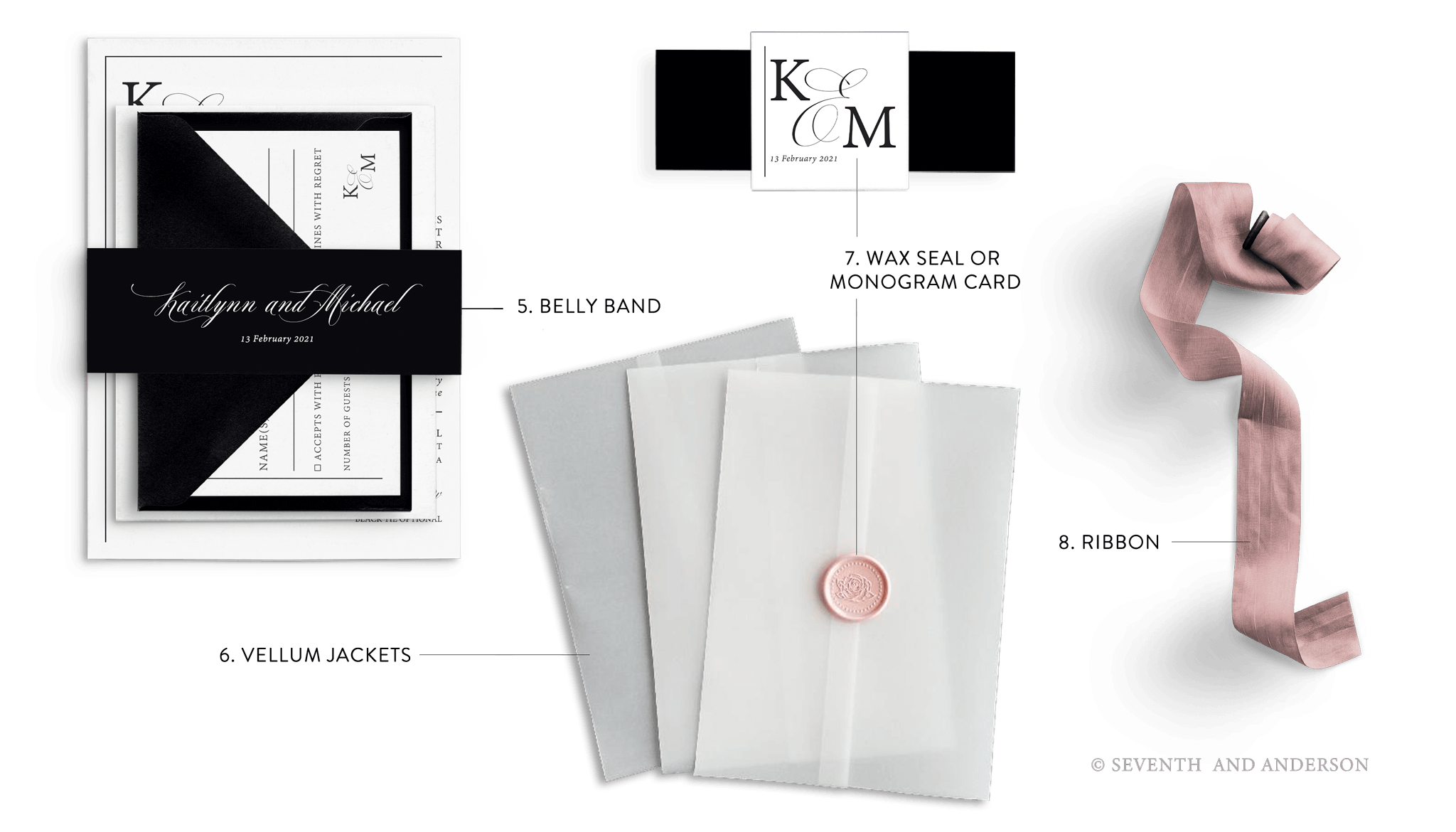
BELLY BAND
This strip of paper wraps around all of the pieces of your wedding invitation suite to hold everything together.
VELLUM JACKETS
Vellum jackets are a great way to add another level of interest to your wedding invitation suite. Secured with twine, ribbon, or a wax seal, it brings it all together for a truly sophisticated design.
WAX SEAL OR MONOGRAM CARD
Use a square tag or wax seal to add interest or secure your belly band or vellum jackets. This is the perfect place to feature a monogram or design element.
RIBBON
Similar to a belly band, ribbon can be used to secure all of your wedding invitation pieces together. Additional uses include tying flatware, favor tags, creating photo backdrops and other wedding decor.
THE ENVELOPE
Envelopes are a crucial component of your wedding invitation suite. Wedding invitations can be sent in single or double envelopes, also known as inner and outer envelopes. Read on to learn the differences and when you should use one or the other.
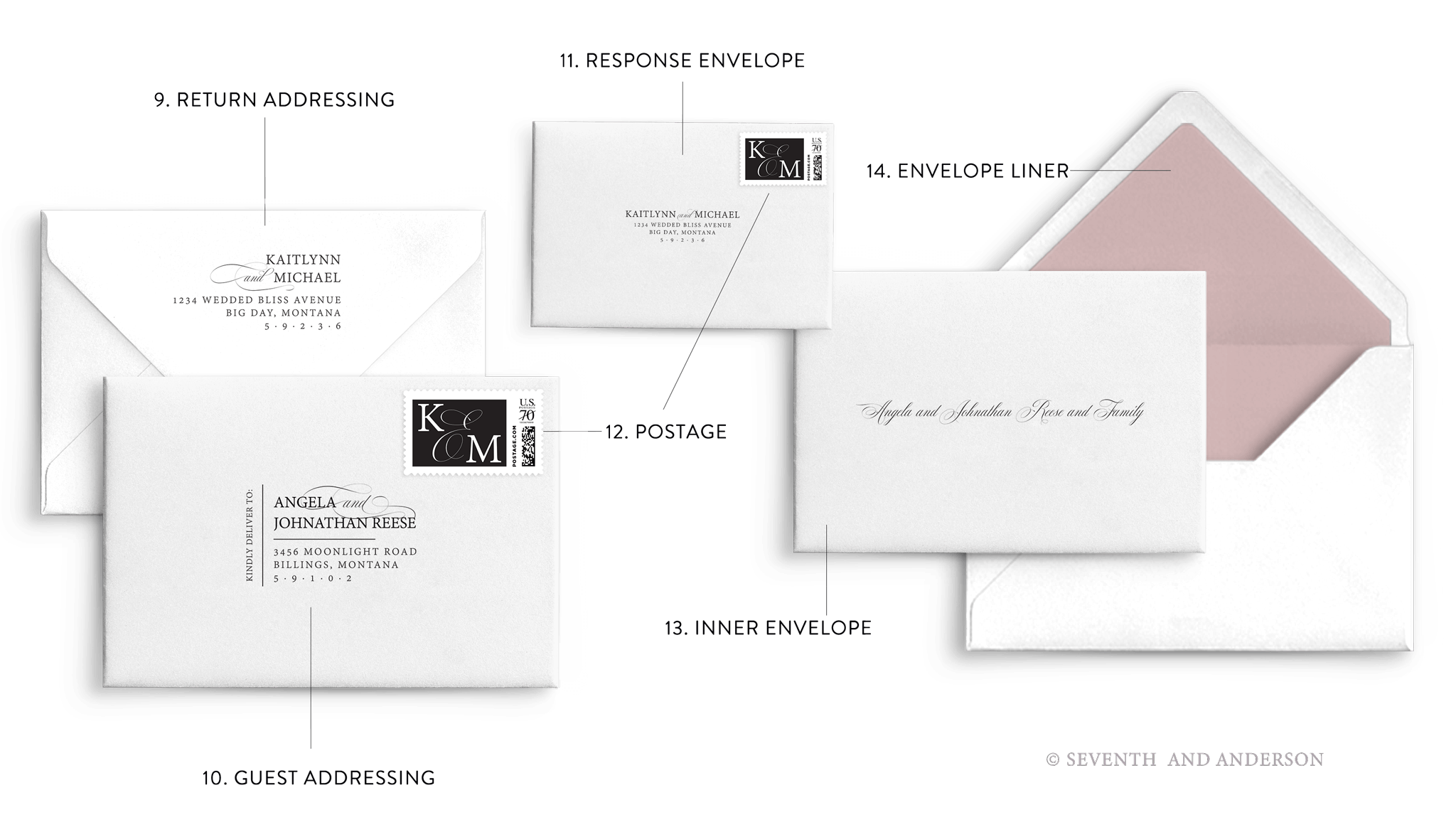
RETURN ADDRESSING
The return address is generally printed on the back flap of the envelope. Names are optional.
GUEST ADDRESSING
Your guests’ name and mailing address is handwritten or printed on the front of the mailing envelope. Use full names, do not abbreviate addresses or states.
RESPONSE ENVELOPE
Include a pre-addressed, stamped envelope so your guests can easily return their response cards. The host’s address is generally used, and be sure to include a name.
POSTAGE
Most wedding invitation suites will require extra postage. Take an assembled wedding invitation suite to the post office so they can weigh it and tell you the correct postage amount.
INNER ENVELOPE
Use an inner envelope to individually list each of your invited guests. This creates an intimate and personalized feel and also clearly indicates who’s invited to the wedding. This is a great way to indicate a guest can bring a date or if children are invited.
ENVELOPE LINER
An envelope liner is a piece of paper attached to the inside flap of the envelope. It can be a solid color, a pattern, or something fun like glitter paper or an engagement photo.
SINGLE INVITATION ENVELOPES
All Seventh and Anderson wedding invitation suites include single envelopes as the standard option. Your name and return address go on the back flap of the envelope. The mailing address and names of all invited guests (including if a guest may bring a date) go on the front of the envelope.
DOUBLE INVITATION ENVELOPES
Double invitation envelopes (also known as inner and outer envelopes) are a more formal and traditional option. The outer envelope is used for mailing. It will showcase your guests’ name and mailing address. The inner envelope is used to hold your wedding invitation suite and lists your guests’ names. It is inserted into the outer envelope, printed side towards the opening. Using double envelopes gives your wedding invitation extra protection from modern day mailing machines. If using wax seals for your envelopes, it is recommended that you use double envelopes.
Truthfully, the bottom line in what to include in your wedding invitation suite comes down to the information you want/need to share with your guests and personal preference. Working with a wedding stationer on your specifics will ensure that your guests feel informed and excited.
WELCOME TO THE BLOG!
GRAB A CUP OF JOE AND ENJOY A MIX OF WEDDING INSPIRATION, HOW TO’S, AND TIPS & TRICKS AS YOU PLAN YOUR BIG DAY.
search the site
featured posts
how many wedding invitations do I order?
What to include in your wedding invitation suite.
browse by category
© 2024 SEVENTH AND ANDERSON | ALL RIGHTS RESERVED | PRIVACY POLICY | TERMS AND CONDITIONS | GUARANTEE
WEBSITE DESIGN BY DAVEY & KRISTA
